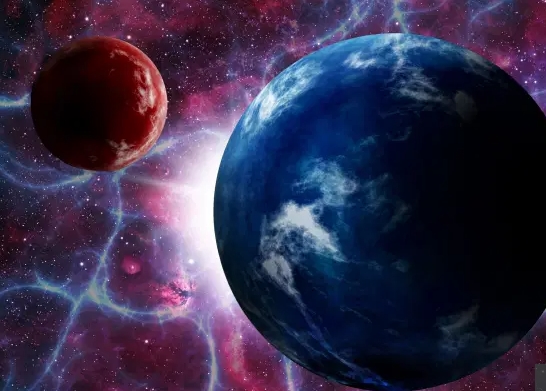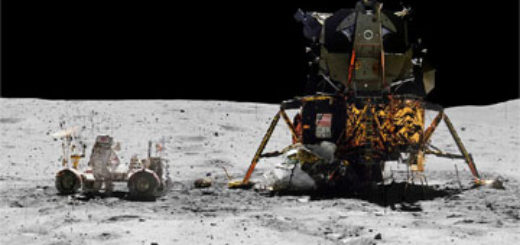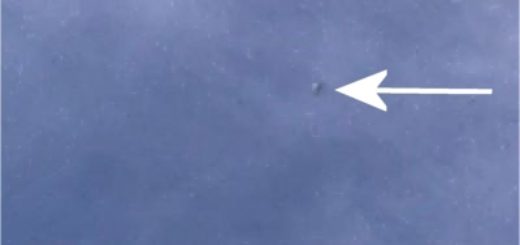Aliens on distant planets may light FIRES to attract our attention – and new telescopes could spot them, study claims

SCIENTISTS hunting for life on distant worlds may have more luck looking for enormous fires or fields of crops than radio signals beamed from super-advanced technologies.
That’s according to new research which suggests that planets outside our Solar System are more likely to be home to “little green farmers” than the high-tech aliens featured in Hollywood flicks
Lead researcher Andrew Lockley of University College London highlights that humanity was on Earth for hundreds of thousands of years before becoming technologically advanced.
It’s fair to assume that most alien civilisations are still living in their “Stone Age” – and searches for their existence should take that into account.
“Most work on aliens looks for life that’s very simple – like bacteria – or advanced, radio-capable civilisations,” Lockley, of UCL’s Faculty of the Built Environment, told The Sun. “That leaves a huge gap.”
It’s possible that aliens are intelligent, but that they’re not building complex technology like radio telescopes, he added.
“Common alien societies might be more like the Inca, or the Elizabethans,” Lockley said.
“These primitive societies were around for a lot longer than we’ve had radio.”
Working with Daniele Visioni, a researcher at Cornell University, Lockley proposes one method for finding these low-tech inhabited worlds.
The pair say that telescopes might have some luck in spotting changes to the brightness and colour of a planet’s surface caused by alien activity.
Detected by reading the amount of sunlight reflected off the surface, this could help scientists to identify large scale agriculture, such as planet-wide scrub burning or the growth of vast fields of crops.
The technique could also identify enormous blazes that have erupted in alien cities, or as a result of a large-scale conflict.
The researchers say that events in Earth’s past – such as the Great Fire of London and aboriginal fire clearance in Australia – show that pre-industrial societies could produce planetary changes that are visible from space.
Writing in the International Journal of Astrobiology in January, they offer evidence that telescopes similar to today’s could detect such changes.
Right now, no telescope is sensitive enough [to make these observations],” Visioni told The Sun.
“But future candidates like CHEOPS, an optical photometric space mission by the European Space Agency, might be.”
The best search candidates would be planets with large continents that orbit small, dim stars, where sunlight reflectance would be most visible, Visioni added.
If you take into account that humanity has been industrialised for 100 years – while pre-industrial civilisations existed for 10,000 years – it’s possible that “Stone Age” aliens may be 100 times more prevalent than advanced ETs, the researchers write in their paper.
It’s even possible that life on other planets is using fire or other means to send out signals to other worlds.
“Just like Earth’s ancient civilisations, they [aliens] may still have sophisticated astronomy,” Lockley wrote in a blog post last month.
“Their understanding of the universe may lead aliens to suspect that they are visible from other planets.
“They may therefore change their behaviour, to attract or avoid attention.”
n other news, alien life could exist just below the surface of Mars, according to scientists.
A cyber sleuth who has exposed hundreds of declassified CIA files on UFOs says the US government knows more about aliens than they let on.
One Nasa scientist has admitted it’s entirely possible that aliens have already visited Earth – and we simply never noticed.
So you think we’ll ever find alien life? Let us know in the comments!



 Creators of mankind
Creators of mankind Description of “Tall white aliens”
Description of “Tall white aliens” Where they came from?
Where they came from? About hostile civilizations
About hostile civilizations The war for the Earth
The war for the Earth “Tall white aliens” about eternal life
“Tall white aliens” about eternal life Video: “Nordic aliens”
Video: “Nordic aliens” Aliens
Aliens Alien encounters
Alien encounters The aliens base
The aliens base UFO
UFO Technology UFO
Technology UFO Underground civilization
Underground civilization Ancient alien artifacts
Ancient alien artifacts Military and UFO
Military and UFO Mysteries and hypotheses
Mysteries and hypotheses Scientific facts
Scientific facts


















